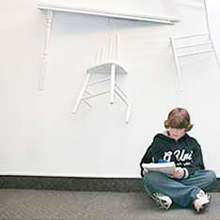he program first began in 1993 in Calgary at the Zoo and has since grown to include 26 sites in Alberta, and many more across Canada, in Michigan and in Singapore. There are now more than 15 000 students each year spending
an entire week with their teacher at a fascinating community site such as a museum, science centre, botanical
garden or city hall. The names of the programs vary and this is not a franchise, but it is hoped that the basic philosophy remains intact.
That first session in 1993 at the Calgary Zoo was a Grade Three class that came to the Zoo every day for a week. Gillian Kydd, a consultant with the Calgary Board of Education worked with the classroom teacher, Angela Rokne,
to bring together the key elements that have since become the essence of the program:
- the teacher is “in the driver’s seat” and the site staff facilitates
- site resource people provide expertise and some experiences for the students
- students use journal writing and drawing to record observations and thoughts
- long periods of time each day to observe – time to focus and reflect
- parents and other volunteers work with groups of children
- the week is interdisciplinary, i.e., subjects such as math, science and social studies are interwoven
- much is done at school before the week to help the students gain knowledge and skills that allow them
to learn in more depth at the site.
Don Harvie, a Calgary philanthropist and head of the Devonian Foundation, laid the financial groundwork that allowed the Calgary Zoo to begin Zoo School in 1994 with an experienced educator as the Zoo School Coordinator. After a highly successful first year, Kydd approached the Glenbow Museum and Museum School began in1995. The Calgary Science Centre (1996), University of Calgary (1996), Canada Olympic Park (1997), Inglewood Bird Sanctuary (1998), City Hall (2000), Cross Conservation Area (2000), Stampede (2002), Aero-Space Museum (2005), and Fire Training Academy (2008) have been added since then.
Don Harvie began the network of partnerships that grew to support the Open Minds/Campus Calgary program. Chevron Canada has been a major supporter since 1995 and fully funds programs at five sites. Petro-Canada, the City of Calgary, the Calgary Stampede are also major partners. The local school district, the Calgary Board of Education, with some monies from the Calgary Catholic School District, has provided staff since the beginning to direct the administration and education support so necessary to the success of the program. Several community foundations such as the Calgary Foundation and the Max Bell Foundation provide support and funding.
The program in Calgary has sites under two names because of funding: Open Minds (funded by Chevron) and Campus Calgary (other funding partners). The program has joint administration and all sites operate with same philosophy.
Other Communities:
The concept has spread to Edmonton and other Alberta communities (15 sites), British Columbia (3 sites), Lansing, Michigan (5 sites). London Ontario (5 sites), a site in St. John’s NFLD and Singapore (one school going to 5 sites) There are currently 15 000 students participating annually in a program based on the Beyond the Classroom concept. |

|